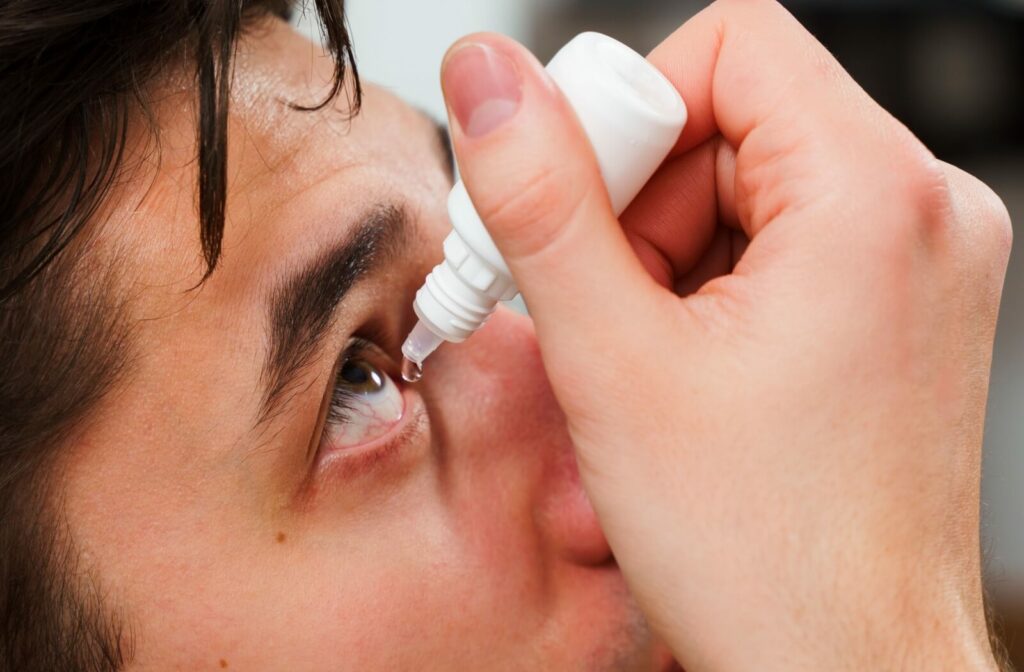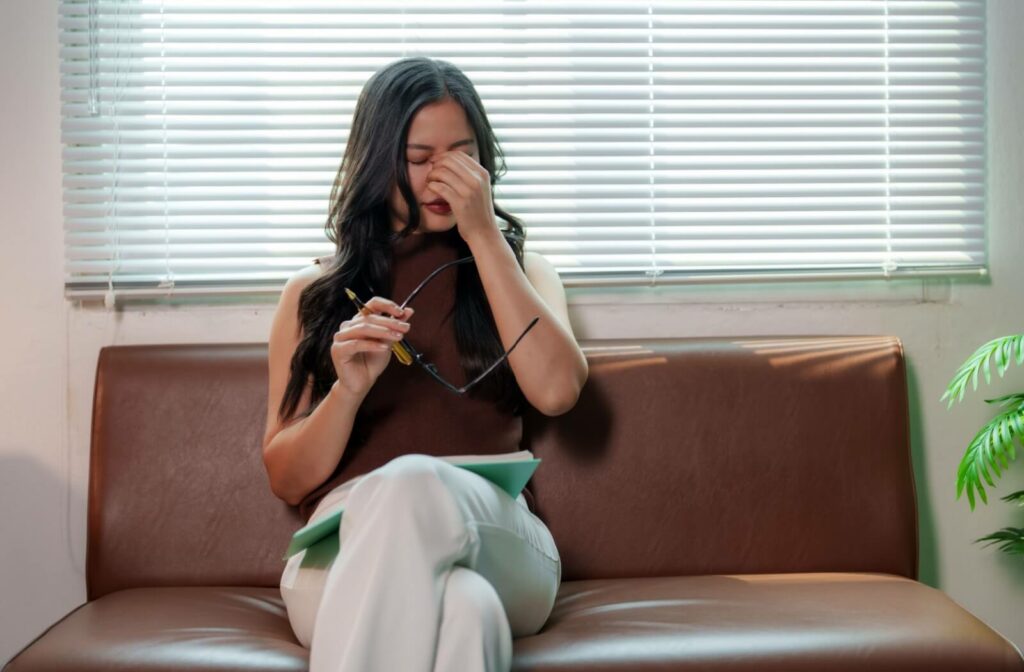If your eyes ever feel dry, irritated, or just “off,” you may have also noticed that your vision seems blurry, even if only briefly. This is a common experience, especially after screen use or exposure to dry air.
One of the most overlooked symptoms of dry eye disease (DED) is blurry vision. This condition affects the protective tear film covering your eyes. When this film becomes unstable or breaks down, vision clarity often suffers alongside comfort.
Understanding how dry eye disease impacts your vision and the options available for treatment can help you take meaningful steps toward relief.
What Is Dry Eye Disease?
Dry eye disease occurs when your eyes either do not produce enough tears or the tears produced lack proper composition. High-quality tears are essential to maintaining a smooth, hydrated eye surface that supports clear vision.
When the tear film is compromised, the eye’s surface becomes irritated and uneven. This can lead to discomfort, inflammation, and visual disturbances like blurriness or fluctuating clarity.
Blurred vision may fluctuate throughout the day or appear more noticeable after tasks that reduce blinking, such as reading or working on screens.
Types of Dry Eye Disease
Tears create a smooth, refractive surface over the eye, which helps bend light accurately as it enters. When this surface becomes uneven due to dryness or tear evaporation, light scatters, and your vision may blur.
Aqueous Deficient Dry Eye
This form of dry eye happens when your eyes do not produce enough tears. It may be related to aging, autoimmune conditions, or medications that reduce tear gland function.
Evaporative Dry Eye
In this case, tears evaporate too quickly because of inadequate oil production from the meibomian glands. Meibomian gland dysfunction (MGD) is a leading cause and can result in poor tear stability.
Both types can interfere with the tear film’s ability to protect the eye and maintain clear vision.
Common Symptoms of Dry Eye Disease
Dry eye symptoms may include:
- Blurry or fluctuating vision
- A gritty or sandy sensation
- Redness or irritation
- Burning or stinging
- Eye fatigue or discomfort after screen use
- Light sensitivity
- Difficulty wearing contact lenses
- Excessive tearing (a reflex to dryness)
These symptoms may be mild at first but can progress if left untreated.
What Causes Dry Eye Disease?
Reduced Tear Production
Some common causes include:
- Age-related changes
- Hormonal fluctuations
- Autoimmune disorders (such as Sjögren’s syndrome)
- Certain medications (antihistamines, antidepressants)
- Laser eye surgery or nerve damage
Increased Tear Evaporation
Factors that may increase tear evaporation include:
- Meibomian gland dysfunction
- Blepharitis (inflammation of the eyelids)
- Prolonged screen use (reduced blinking)
- Weather conditions such as wind and cold, or factors like smoke or dry indoor air
- Contact lens wear
- Vitamin A deficiency
A comprehensive eye exam can help pinpoint the underlying cause of your symptoms.
The Importance of a Stable Tear Film
Your tear film has three essential layers:
- Oil (lipid) layer – prevents evaporation
- Water (aqueous) layer – provides hydration
- Mucus layer – helps tears spread evenly across the surface
When the oil layer is disrupted, usually due to blocked or underperforming meibomian glands, tears evaporate more quickly and dry spots form on the eye. This not only causes discomfort but also affects how clearly you see.
A Fun Comparison
Unlike humans, some animals don’t rely heavily on their eyesight. Take mosquitoes, for example. Their vision is quite poor, so they use body heat and carbon dioxide to locate their next target.
Humans, on the other hand, depend on sharp vision for nearly everything we do. That’s why even slight blurriness from dry eyes can feel disruptive, whether you’re reading, driving, or working on your computer.

In-Office Treatments for Dry Eye Relief
Modern in-office treatments go beyond temporary solutions like artificial tears. These therapies address the root causes of dry eye and can provide lasting relief.
iLux®
iLux® is a treatment designed to unblock the meibomian glands and restore healthy oil flow. It uses light-based heat to warm the glands to a safe temperature, softening trapped oils so they can be gently expressed.
This therapy is:
- Safe and quick
- Effective for patients with MGD
- Designed to restore tear film balance
- Non-invasive and comfortable
Many patients experience noticeable relief and improvement in vision after treatment.
Punctal Plugs
If your tears drain too quickly, punctal plugs can help retain moisture by slowing tear drainage. These tiny, medical-grade inserts are placed in the tear ducts and are both safe and reversible.
Dry Eye Kits
We also provide at-home dry eye kits to support your care between visits. These kits may include:
- Warm compress masks
- Eyelid wipes or cleansers
- Omega-3 supplements
- Preservative-free lubricating drops
Combining in-office treatments with proper at-home care can significantly improve your eye comfort and visual clarity.
Additional Treatment Options
Depending on your condition, we may also recommend:
- LipiFlow to deliver heat and pressure to the meibomian glands
- LipiScan to image gland structure
- Intense Pulsed Light (IPL) to reduce inflammation
- Low-Level Light Therapy (LLLT) to stimulate oil production
- Radiofrequency therapy to improve gland performance and support collagen
- Lifestyle recommendations such as hydration, blinking exercises, and screen breaks
Every treatment plan is tailored to your unique needs and dry eye severity.
See More Clearly with Support from Focus West Optometry
Blurry vision does not always mean your glasses prescription has changed. It could be a sign that your eyes are dry and your tear film is no longer providing the protection and clarity it should.
At Focus West Optometry in Calgary, we offer comprehensive dry eye assessments and personalized treatment options, including iLux®, punctal plugs, and professionally curated dry eye kits. Whether your symptoms are mild or disruptive, our team is here to help you find lasting relief and sharper vision.
Book an appointment today and discover what clear, comfortable vision can feel like again.



